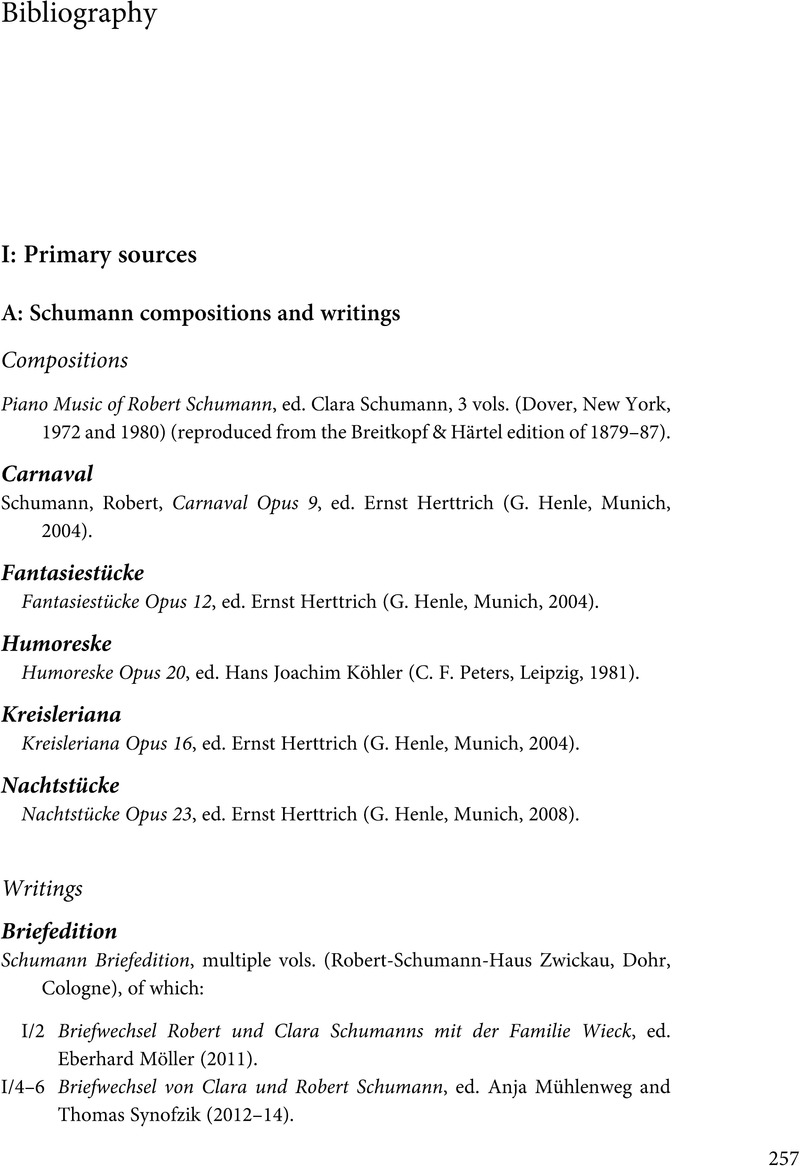Book contents
- Schumann’s Music and E. T. A. Hoffmann’s Fiction
- Schumann’s Music and E. T. A. Hoffmann’s Fiction
- Copyright page
- Contents
- Figures
- Music examples
- Acknowledgments
- Introduction
- 1 Chrysalis, 1827–1834
- 2 Notions of resonance and expression
- 3 A musical carnival, 1834–1837
- 4 Form, content and conception
- 5 Dream images, 1837
- 6 ‘In possession of the secret’, 1836–1838
- 7 New worlds, 1838
- 8 Associations and expressiveness in Schumann’s ‘Hoffmann works’
- 9 Antimatter, 1839–1840
- 10 ‘The closed book’
- Appendices
- Bibliography
- Index
- References
- Schumann’s Music and E. T. A. Hoffmann’s Fiction
- Schumann’s Music and E. T. A. Hoffmann’s Fiction
- Copyright page
- Contents
- Figures
- Music examples
- Acknowledgments
- Introduction
- 1 Chrysalis, 1827–1834
- 2 Notions of resonance and expression
- 3 A musical carnival, 1834–1837
- 4 Form, content and conception
- 5 Dream images, 1837
- 6 ‘In possession of the secret’, 1836–1838
- 7 New worlds, 1838
- 8 Associations and expressiveness in Schumann’s ‘Hoffmann works’
- 9 Antimatter, 1839–1840
- 10 ‘The closed book’
- Appendices
- Bibliography
- Index
- References
Summary

- Type
- Chapter
- Information
- Schumann's Music and E. T. A. Hoffmann's Fiction , pp. 257 - 274Publisher: Cambridge University PressPrint publication year: 2016



